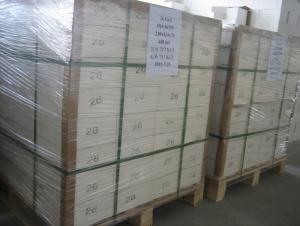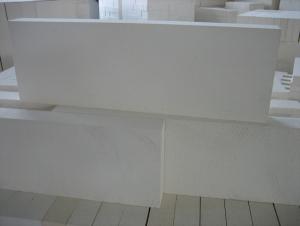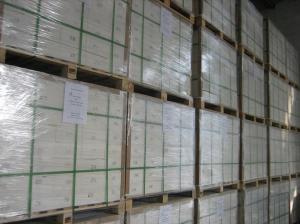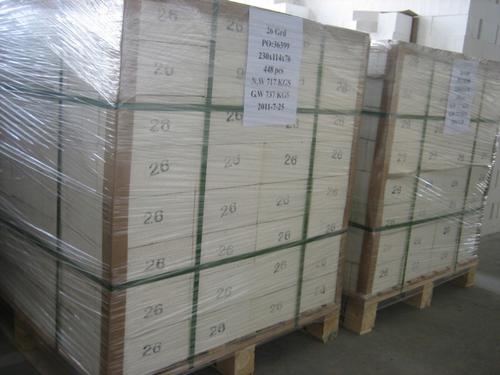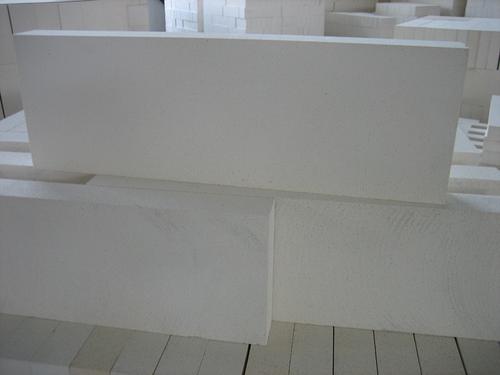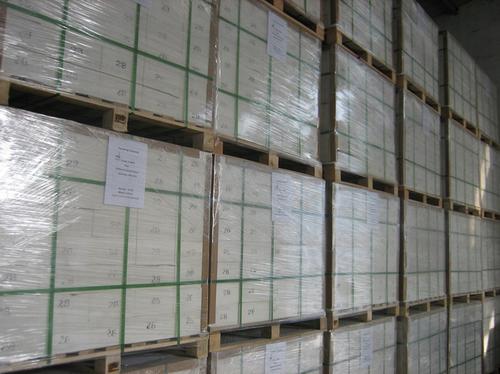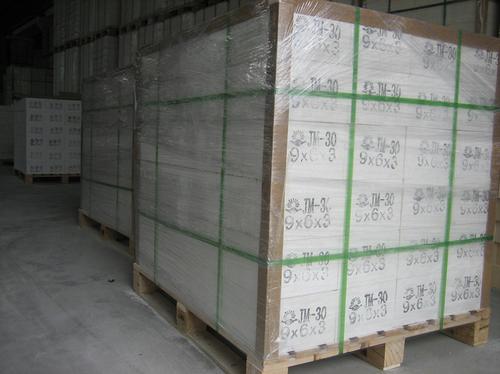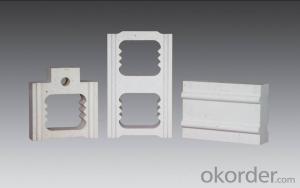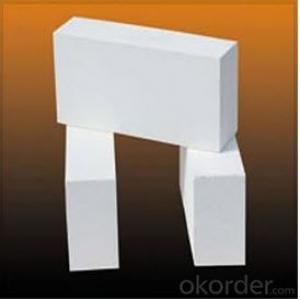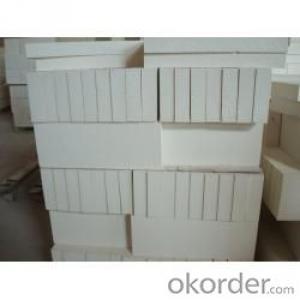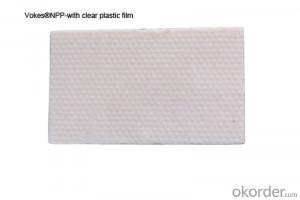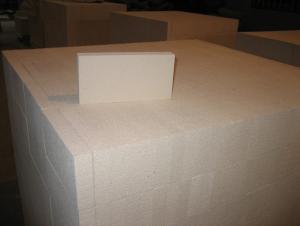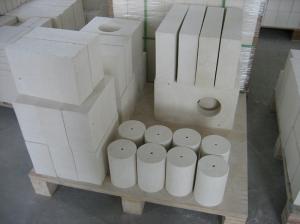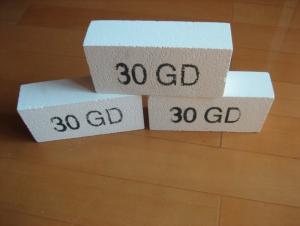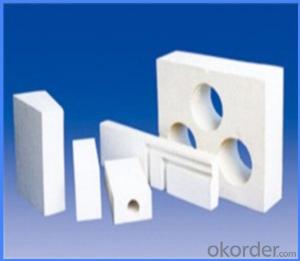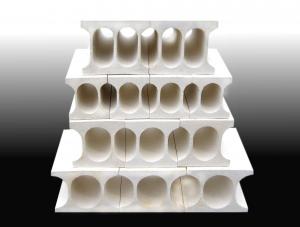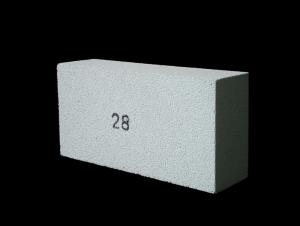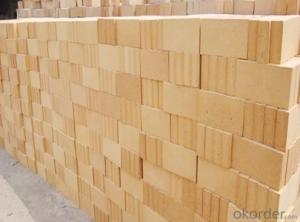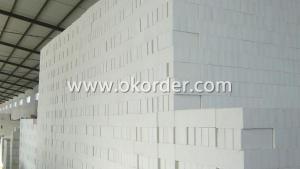Insulating Fire Brick - Refractory Mullite Insulating Refractory Brick JM 37
- Loading Port:
- Shanghai
- Payment Terms:
- TT OR LC
- Min Order Qty:
- 20 m.t.
- Supply Capability:
- 20 m.t./month
OKorder Service Pledge
OKorder Financial Service
You Might Also Like
Okorder series heat insulation brick
Okorder series thermal insulation brick is an effective, energy saving, low carbon, environmental protection advanced, according to the ASTM standard manufacturing products. Okorder series products have all kinds of materials in the field of metallurgy, industrial furnaces, aluminum, the best Li Ning petrochemical and insulation, electric power and glass ceramics. They can be used as part of an insulation or not to melt. Products have been widely used in the following furnace, achieved satisfactory results.
Application of heat preservation brick
Metallurgical Industry: blast furnace, hot blast furnace, heating furnace, etc..
Petrochemical Industry: ethylene cracking furnace, hydrogen furnace, the main furnace, heating furnace, etc..
Ceramic industry: roller kiln, kiln, etc..
Glass industry: glass furnace regenerator, etc.
Carbon industry: carbon furnace, etc..
Aluminum electrolysis industry: aluminum reduction cell, etc.
Other industries: tunnel kiln, shuttle kiln, etc..
Advantages of heat insulation brick
Low thermal conductivity: many air holes will bring good thermal insulation effect, energy saving.
High crushing strength: high crushing strength, volume stability.
Low heat storage: small heat storage, absorb more heat, energy-saving effect is obvious.
Chundu: High-speed Rail, low content of alkali metal impurities.
Accuracy: the size of the brick machining precision, cutting and grinding the special shape, speed up the brick.
Technical Data
ITEM | GJM30 | GJM28 | GJM26 | GJM23 |
Classification Temperature, ℉/℃ | 3000/1650 | 2800/1540 | 2600/1430 | 2300/1260 |
Bulk Density,g/cm³ | ≤1.0 | ≤0.9 | ≤0.8 | ≥0.5 |
Reheating Linear Change, % | ≤0.9 (1550℃,12 h) | ≤0.8 (1510℃,12 h) | ≤0.7 (1410℃,12 h) | ≤0.5 (1230℃,12 h) |
Al2O3 Content, % | ≥75 | ≥65 | ≥55 | ≥45 |
Fe2O3 Content, % | ≤0.5 | ≤0.6 | ≤0.7 | ≤1.0 |
Thermal Conductivity: | ||||
800℃, w/m.k | ≤0.39 | ≤0.37 | ≤0.35 | ≤0.18 |
1000℃, w/m.k | ≤0.43 | ≤0.41 | ≤0.39 | ≤0.20 |
1200℃, w/m.k | ≤0.48 | ≤0.46 | ≤0.43 | --- |
Insulating brick
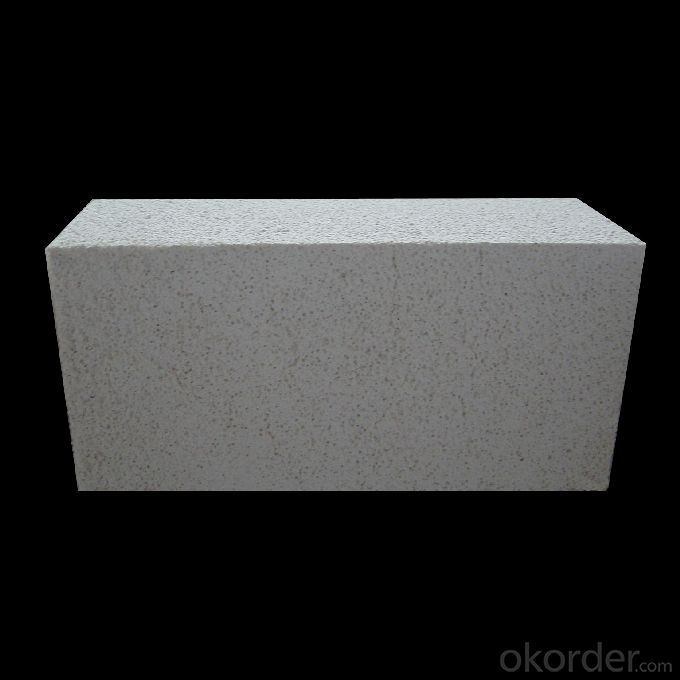
- Q: Do insulating fire bricks have a high thermal stability?
- Yes, insulating fire bricks have a high thermal stability. These bricks are designed to withstand high temperatures without deteriorating or losing their insulating properties. They are made from high-quality refractory materials that can withstand extreme temperatures, making them ideal for applications where thermal stability is crucial. Insulating fire bricks have low thermal conductivity, which means they can effectively trap heat and prevent it from escaping. This property allows them to maintain stable temperatures in environments where heat retention is essential, such as furnaces, kilns, and other high-temperature industrial processes. Overall, insulating fire bricks are known for their excellent thermal stability, making them a reliable choice for applications that require insulation and protection against high temperatures.
- Q: Advantages and disadvantages of external formwork and self thermal insulation block
- Exterior wall internal insulation technology, wall insulation is to heat insulation materials on the inside of the outer wall.Advantage:1) waterproof, weather resistance and other technical indicators of finishes and insulation material requirements are not very high, gypsum board, gypsum plaster mortar can meet the use requirement, convenient;2) the internal insulation material is separated by the floor slab and is only constructed within a high storey without scaffolding;3) in the hot summer and cold winter and hot summer and warm winter zone, the inner heat preservation can meet the requirement;4) for the existing buildings of energy-saving transformation, especially at present when the house sold to individuals, the whole building or the whole district unified transformation difficulties, only the possibility of internal insulation. Therefore, in recent years, the exterior wall insulation has also been widely used.Shortcoming:1) because of beam, slab, structural column will cause thermal bridges, more heat loss;2) due to the material, structure, construction and other reasons, the cracking of the facing layer;3) it is not convenient for users to decorate two times and hang ornaments;4) occupy indoor use space;5) the energy saving of the existing buildings is very disturbing to the daily life of the residents.6) wall under outdoor climate, the temperature difference between day and night and the large temperature difference between summer and winter, easy to cause the wall cracking.
- Q: Are insulating fire bricks resistant to high-velocity gases?
- Yes, insulating fire bricks are generally resistant to high-velocity gases. Insulating fire bricks are designed to have high thermal resistance and low thermal conductivity, which makes them ideal for applications where they are exposed to high temperatures and gases. They are able to withstand the impact and velocity of gases without getting damaged or compromised. Insulating fire bricks are commonly used in industrial furnaces, kilns, and other high-temperature environments where they need to provide insulation and protection against high-velocity gases.
- Q: Do insulating fire bricks require a specific curing or drying process before use?
- Yes, insulating fire bricks typically require a specific curing or drying process before use. This is done to remove any moisture or volatile organic compounds (VOCs) that may be present in the bricks, as well as to ensure they achieve their maximum insulating properties. The curing or drying process for insulating fire bricks usually involves slowly heating the bricks to gradually increase their temperature. This allows any moisture or VOCs to be released without causing any cracks or damage to the bricks. The rate of temperature increase and the overall duration of the curing process can vary depending on the type and thickness of the bricks. It is important to follow the manufacturer's instructions and recommendations for the specific type of insulating fire bricks being used. This will ensure that the curing or drying process is carried out correctly and that the bricks are ready for use in high-temperature applications such as kilns, furnaces, or fireplaces. Neglecting to properly cure or dry the bricks may result in reduced insulating properties and potential cracking or failure of the bricks when exposed to high temperatures.
- Q: What is the typical bulk density of an insulating fire brick?
- The typical bulk density of an insulating fire brick is around 0.6 to 1.2 grams per cubic centimeter (g/cm³).
- Q: Is it possible to cut insulating fire bricks to fit custom shapes?
- Yes, it is possible to cut insulating fire bricks to fit custom shapes. Insulating fire bricks are made from lightweight materials such as ceramic fiber, which can be easily cut or shaped using various tools. Common methods for cutting insulating fire bricks include using a saw, knife, or even a hot wire cutter. It is important to follow proper safety precautions and wear protective gear when cutting these bricks, as the cutting process may produce dust or sharp edges. With the right tools and techniques, it is possible to cut insulating fire bricks to fit any desired custom shape.
- Q: Can insulating fire bricks be used in the construction of flue liners?
- Yes, insulating fire bricks can be used in the construction of flue liners. Insulating fire bricks are designed to withstand high temperatures and provide excellent insulation properties. These bricks are made from lightweight materials such as vermiculite or perlite, which have low thermal conductivity. This makes them ideal for lining flues, as they can help to retain heat and improve the efficiency of the flue system. Additionally, insulating fire bricks are resistant to thermal shock and can withstand rapid temperature changes, which is important in flue applications where the temperatures can fluctuate significantly. Overall, using insulating fire bricks in the construction of flue liners can help to enhance the performance and safety of the flue system.
- Q: Can insulating fire bricks be used in residential construction?
- Insulating fire bricks, also known as refractory bricks, are primarily designed for high-temperature applications like industrial furnaces and kilns. Their purpose is to withstand extreme heat, have low thermal conductivity, and offer excellent insulation properties. Although insulating fire bricks can be utilized in residential construction, they are not usually the preferred choice for such projects due to various reasons. Firstly, they are considerably more expensive compared to other construction materials available in the market. This cost factor often makes them less desirable for residential projects, where budget considerations are crucial. Secondly, insulating fire bricks are primarily designed to provide thermal insulation in high-temperature environments, which is relatively rare in residential construction. Standard construction materials like concrete blocks, bricks, or insulation boards can usually provide sufficient insulation for residential buildings. Lastly, insulating fire bricks are not as structurally strong as other construction materials, making them less suitable for load-bearing applications in residential construction. These bricks are typically used as a secondary layer or lining in industrial furnaces, rather than being used as the primary building material. In conclusion, although insulating fire bricks can technically be used in residential construction, they are not commonly chosen due to their high cost, limited applicability, and structural limitations. Residential construction typically relies on more cost-effective and versatile materials to meet insulation and structural requirements.
- Q: Do insulating fire bricks require any special cleaning procedures?
- Special cleaning procedures are not necessarily needed for insulating fire bricks. Nevertheless, just like any other substance, they can gather dust, dirt, or debris as time goes on, which may diminish their insulating capabilities. To uphold their effectiveness, it is suggested to occasionally eliminate any loose particles by gently brushing or vacuuming the surface of the bricks. If the bricks come into contact with oil or grease, it is recommended to utilize a mild detergent or soap solution for cleansing the affected regions. In general, consistent maintenance and preventing excessive accumulation will guarantee their optimal performance.
- Q: Can insulating fire bricks be used in the construction of smelting crucibles?
- Yes, insulating fire bricks can be used in the construction of smelting crucibles. Insulating fire bricks are designed to withstand high temperatures and provide excellent insulation. They are commonly used in applications that require heat retention and protection, such as kilns and furnaces. Smelting crucibles, which are used to melt and refine metals, also require materials that can withstand extreme temperatures. Insulating fire bricks are an ideal choice for constructing smelting crucibles because they can help maintain a consistent temperature within the crucible and prevent heat loss. Additionally, their insulating properties can reduce energy consumption and increase the efficiency of the smelting process.
Send your message to us
Insulating Fire Brick - Refractory Mullite Insulating Refractory Brick JM 37
- Loading Port:
- Shanghai
- Payment Terms:
- TT OR LC
- Min Order Qty:
- 20 m.t.
- Supply Capability:
- 20 m.t./month
OKorder Service Pledge
OKorder Financial Service
Similar products
Hot products
Hot Searches
Related keywords
